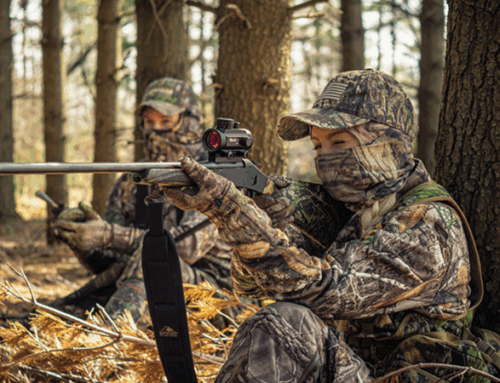Camouflage prints on hunting clothing play an important role in the hunting game, providing concealment and protection. However,when choosing camouflage printing technology, hunting apparel manufacturers are often faced with two options: digital printing and transfer paper printing. BOWINS Garment is the professional hunting clothes manufacturer and supplier, our products include hunting jackets, hunting vests, hunting pants, and more. This article will take an in-depth look at the differences between digital printing and paper transfer printing, and their suitability for different hunting fabrics.
1. Definition of Digital Printing and Transfer Paper Printing for Hunting Clothing
Digital printing and transfer paper printing are two common technologies used in hunting camouflage printing. Digital printing prints the pattern directly on the fabric through a digital printer, while transfer paper printing prints the pattern on special transfer paper, and then transfers the pattern to the fabric through the heat transfer.The following are specific definitions:
1.1 What Is Digital Printing?
Digital printing is a printing technology that prints images directly onto fabric, using a digital printing machine and special inks. The main advantage of digital printing is that it offers high design flexibility and can achieve complex patterns, details and gradient effects.
1.2 What Is Transfer Paper Printing?
Transfer paper printing is a printing technology that prints patterns on transfer paper and then transfers the pattern to the fabric through heat pressing. In transfer paper printing, the pattern is first printed on special paper through dye ink or pigment ink, and then a heat press is used to transfer the pattern to the fabric. The main advantage of transfer paper printing is that it is suitable for high-volume production, allowing for high efficiency and consistency.
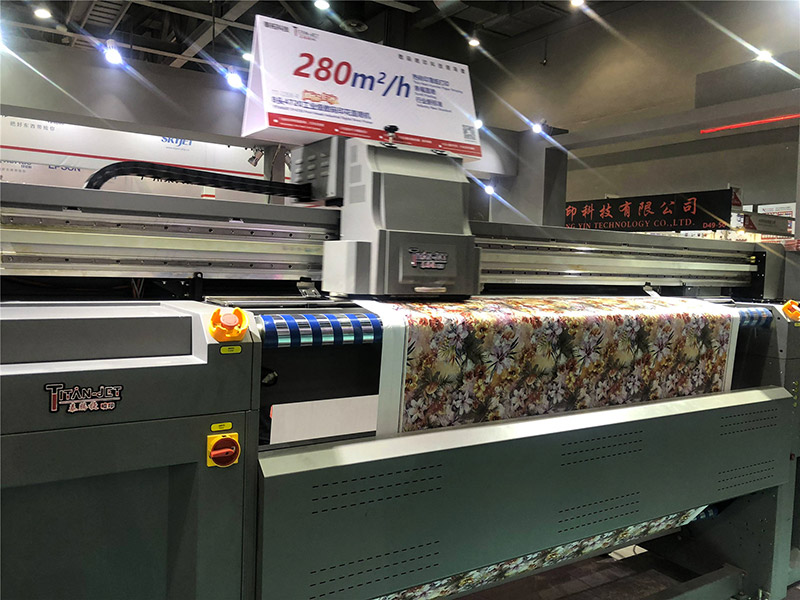
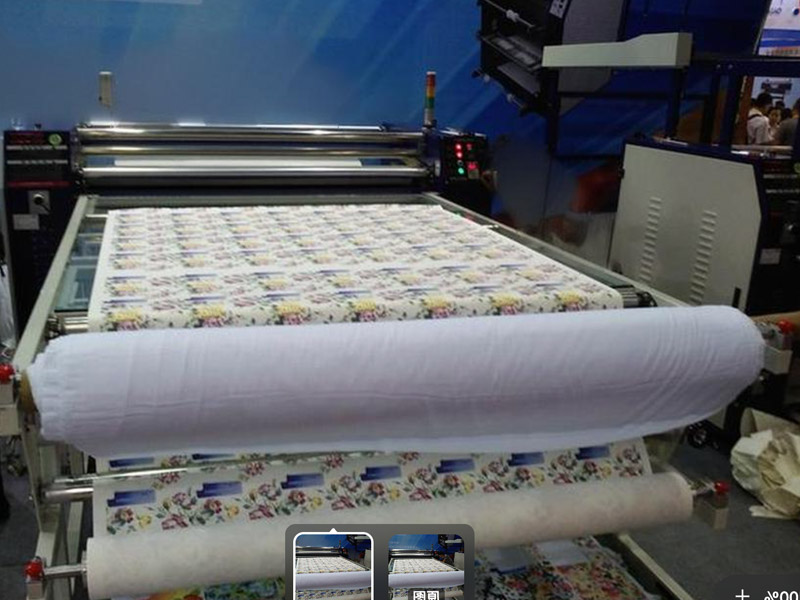
2. Different Process of Digital and Transfer Paper Printing for Hunting Clothing
Digital printing and transfer paper printing have different characteristics in terms of printing quality, pattern details and color saturation. Digital printing can achieve higher printing quality and fineness, with clearer pattern details and more vivid colors. Although transfer paper printing is relatively traditional, it still has certain advantages, such as being more convenient to apply on some complex fabrics. The following is a comparison of specific advantages and disadvantages:
2.1 How Do You Make a Digital Print on Hunting Clothing?
To create a digital print on hunting clothing, you can use a heat transfer machine to apply printed coated paper onto polyester-based fabric. This process, known as the fusing method, involves extreme heat and pressure. The coated paper, also called heat transfer sublimation paper, holds the printed image. Digital printing is suitable for small batch production and personalized customization, as designs can be easily switched and adjusted.
However, it can be more expensive due to equipment, ink, and maintenance costs, although the costs are gradually decreasing with technological advancements. It’s important to note that the durability and permanence of digital prints may be lower, especially in outdoor environments or with frequent washing. However, advancements in inks and post-processing methods can help enhance their durability.
2.2 How do you Use Transfer Paper On Hunting Clothing?
Using transfer paper on hunting clothing is a popular method for adding custom designs, logos, or images to personalize your gear. To apply transfer paper, start by preparing the design and printing it onto the transfer paper using an inkjet or laser printer.
Ensure the clothing item is clean and wrinkle-free, and position the transfer paper with the printed design facing down onto the desired location.
Apply heat and pressure with an iron, using a thin cloth or parchment paper as a protective barrier. After the recommended time, peel off the transfer paper while it’s still warm, ensuring that the design has transferred onto the fabric.
Allow the clothing to cool completely before handling or wearing. Note that transfer paper designs may not be as durable as other methods, so follow the care instructions provided by the manufacturer to maintain the design’s longevity. Using transfer paper offers a cost-effective way to customize your hunting clothing and showcase your individual style.
3. Selection of Fabrics Suitable for Hunting Clothing
Different hunting fabrics have different requirements and restrictions for digital printing and transfer paper printing. Certain fabrics may be better suited for digital printing as this technology can better adapt to the texture and fabric properties of the fabric. However, transfer paper can also provide excellent results when printed on some specific fabrics, such as certain coated fabrics or elastic fabrics.
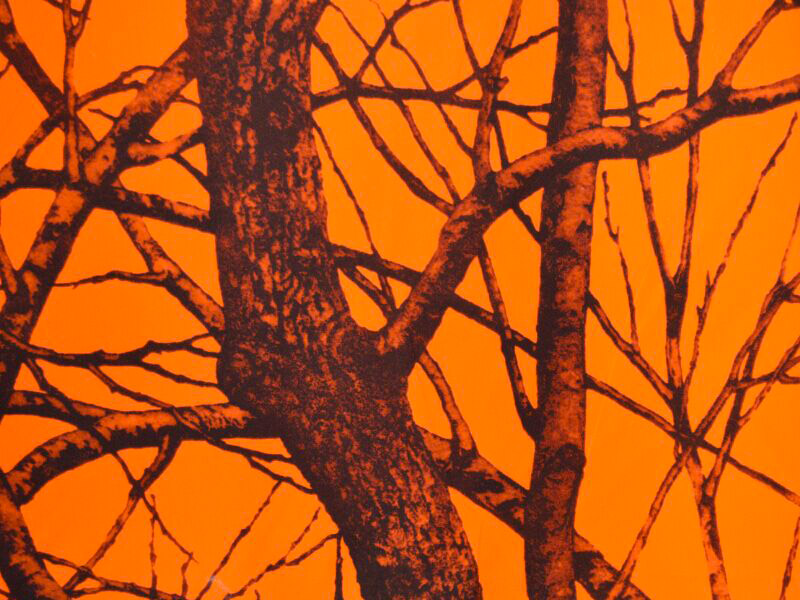
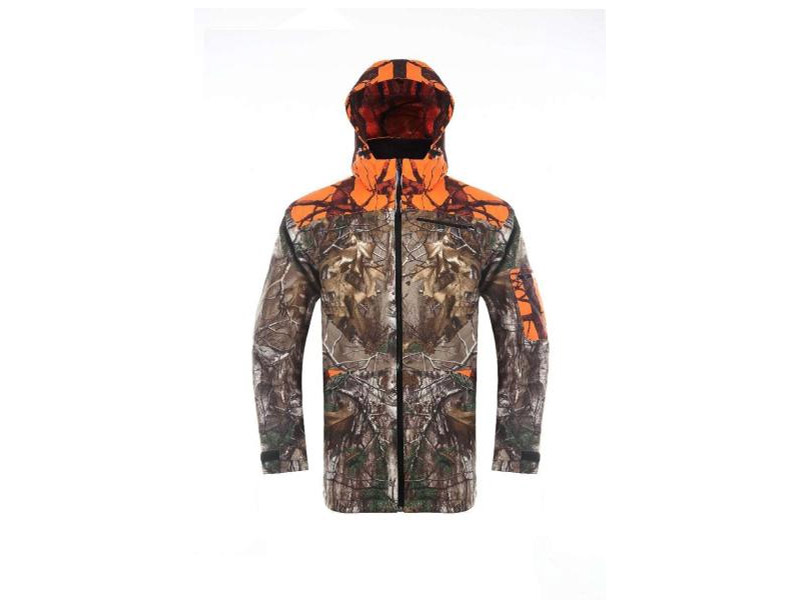
4. Cost and Production Efficiency
Digital printing and transfer paper printing will have a certain impact on the cost and production efficiency of hunting clothing manufacturers. The following are their specific impacts:
4.1 Cost Impact
- Digital printing: The cost of digital printing is usually higher because it requires professional digital printing equipment and high-quality ink. In addition, digital printing also requires fabric pre-processing and post-processing to ensure the quality and durability of the printing effect. These additional costs may have an impact on the manufacturer’s production costs.
- Transfer paper printing: The cost of transfer paper printing is relatively low because it uses transfer paper and traditional printing equipment. Transfer paper is relatively low cost and can provide high efficiency and economy when producing in large quantities.
4.2 Impact on Production Efficiency
- Digital printing: Digital printing can usually achieve faster production speed, and is especially suitable for small batch customized production. Digital printing can directly print patterns on fabrics without the need to make and apply transfer paper, eliminating the time and labor costs of the transfer process. In addition, digital printing also has the flexibility to quickly adjust and modify designs, which is very advantageous when quickly responding to market needs.
- Transfer paper printing: Transfer paper printing is usually suitable for mass production, especially for repeated printing of the same pattern and design. Although transfer paper printing requires making and applying transfer paper, which adds some extra steps, high-efficiency production can be achieved through automated printing equipment in mass production.
In general, there are certain trade-offs between digital printing and transfer paper printing in terms of cost and production efficiency. Digital printing has advantages in small batch customization and flexibility, but the cost is higher; transfer paper printing has more advantages in mass production and economy, but requires an additional transfer process. Hunting apparel manufacturers can choose the appropriate printing technology based on their needs and production scale to balance costs and production efficiency.
5. Challenges
In the hunting camouflage printing market, although digital printing and transfer paper printing have their advantages, they also face some challenges. Here are some common challenges:
5.1 Design Limitation Challenges
Digital printing and transfer paper printing also face some limitations in design. Digital printing often offers more design flexibility and detail, but may be color limited or unable to achieve specific effects on certain fabrics. Transfer paper printing can provide a greater color range and pattern repeatability, but may be limited by the size and shape of the paper during the printing process.
5.2 Environmental Friendliness Challenges
The digital equipment and inks used in the printing process, as well as the paper used for transfer paper printing, may have environmental impacts. Manufacturers need to consider ways to reduce waste and use environmentally friendly materials to reduce the environmental impact of the printing process.
6.Market Demand and Trends for Heated Clothing Printing
The hunting camouflage printing market is constantly growing and evolving. The development of digital printing technology has made printing more precise and diversified, meeting consumer demand for personalized and high-quality products. Transfer paper printing technology still occupies a certain market share in some specific scenarios. Understanding market needs and trends is critical for manufacturers to meet changing consumer demands.
7. Select Recommendation
When choosing the right printing technology for hunting camouflage printing, here are some suggestions to help you make your decision:
7.1 Understand Market Demand and Trends
First, you need to understand the demand and trends for hunting camouflage printing in the target market. Consider consumer preferences, individual needs, and competition in the market. This will help you determine which printing technology will suit your market needs.
7.2 Consider Production Scale and Requirements
Determining your production scale and requirements is an important factor in choosing a printing technology. If you need small batch customized production, such as only 300-500 pieces of clothing, digital printing may be more suitable; if you need large-scale production, such as more than 500 pieces of clothing, and there are regular returns every year, transfer paper printing may be a more cost-effective option.
7.3 Evaluate Printing Quality and Effect
Pay attention to the impact of printing technology on printing quality and effect. For safari camouflage prints, you want the pattern to be sharp in detail, colorful, and have good permanence and durability. Evaluate the print quality and results of different printing technologies by observing samples or referring to case studies.
7.4 Consider Cost and Investment
Understand the cost and investment requirements of different printing technologies. This includes printing fees, ink, paper and related costs. Assess your budget and investment capabilities, and choose a printing technology that meets economic feasibility.
7.5 Consider Design Flexibility
Design flexibility is also an important consideration when it comes to hunting camouflage prints. Different printing techniques may have limitations on pattern design and color. Make sure the printing technology you choose can meet your design requirements and creativity.
8. Conclusion
When choosing hunting camouflage printing technology for heated clothing, you should consider the difference between digital printing and transfer paper printing, and choose the appropriate technology according to different hunting fabrics. Digital printing and transfer paper printing each have their own advantages and applicability, and customers need to make wise choices based on product needs and market trends.
The above is some common information about digital printing and transfer paper printing. Taian Bowins Garment Co., Ltd., is a professional functional clothing manufacturer, has been focusing on the design and manufacturing of professional hunting clothing for 16 years. The customers we cooperate with either arrange digital printing of camouflage patterns or have multiple versions of perennial transfer paper printing. Before arranging relevant camouflage hunting clothing for you, we will first arrange inkjet samples to confirm the effect of the camouflage patterns. We hope this article was helpful to you.
If you have any questions about digital printing and transfer paper printing for hunting wears, and which printing technology to choose, please feel free to contact us for consultation. If you want to know more about hunting clothing, please visit our website. Bowins will wholeheartedly provide you with quality service.

